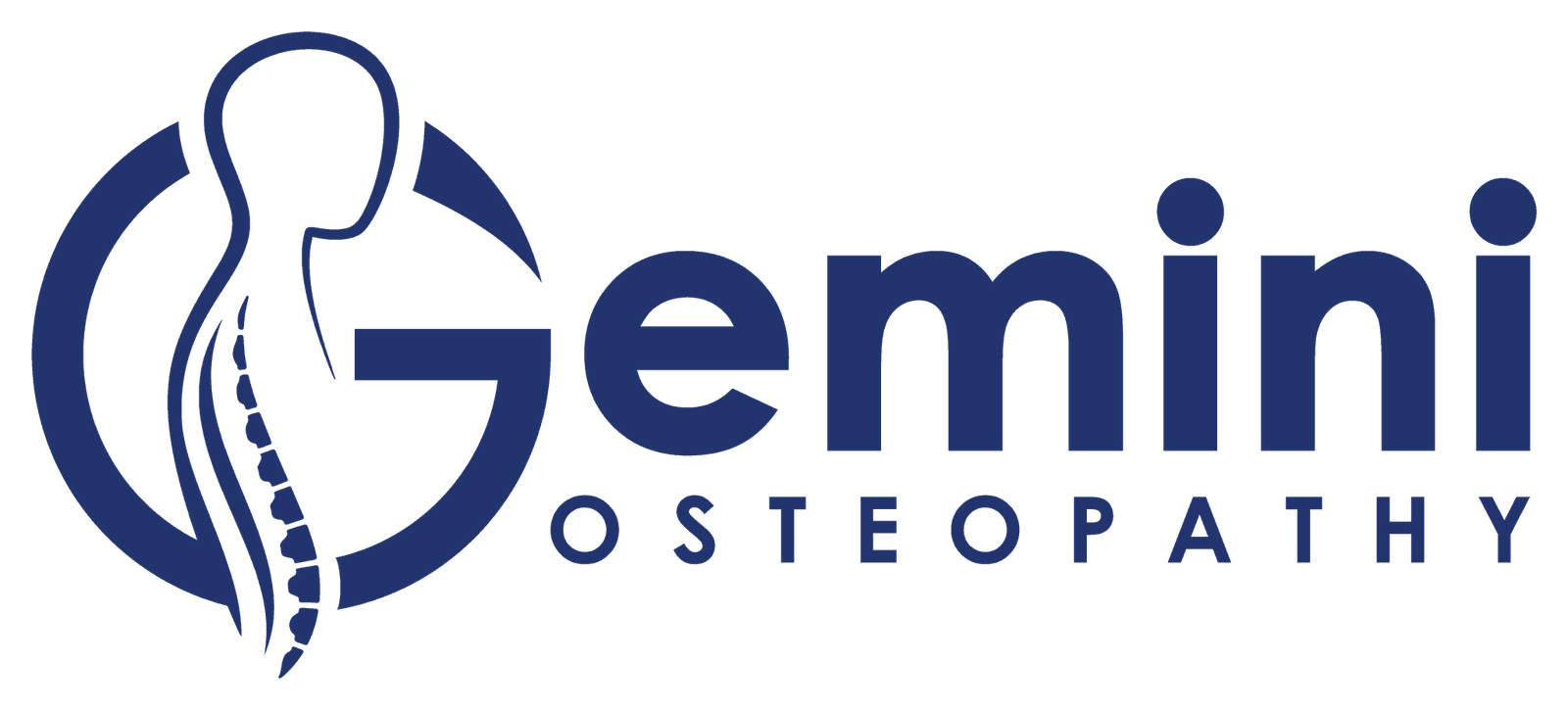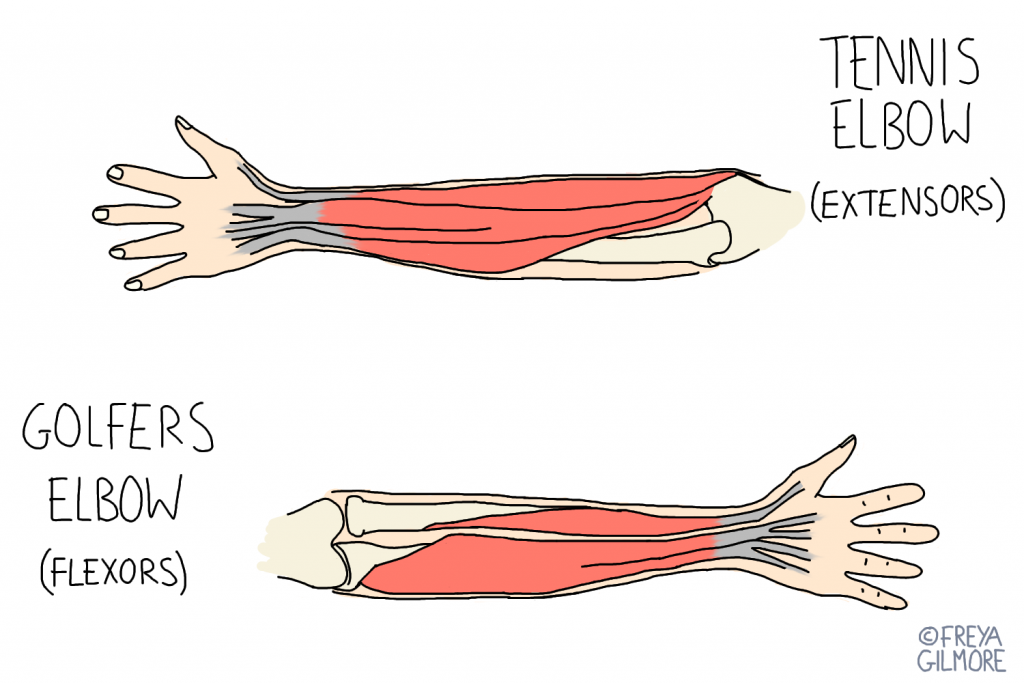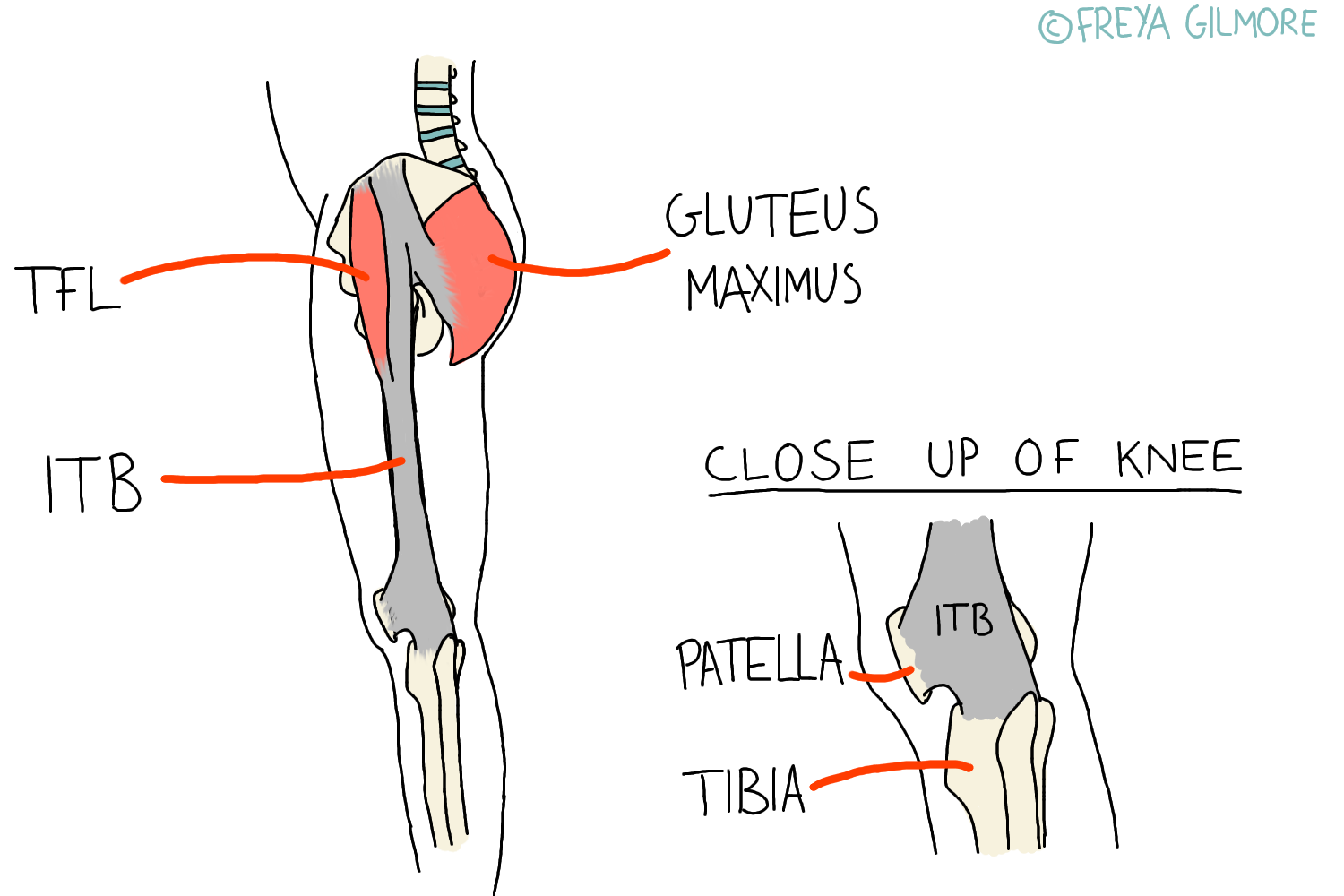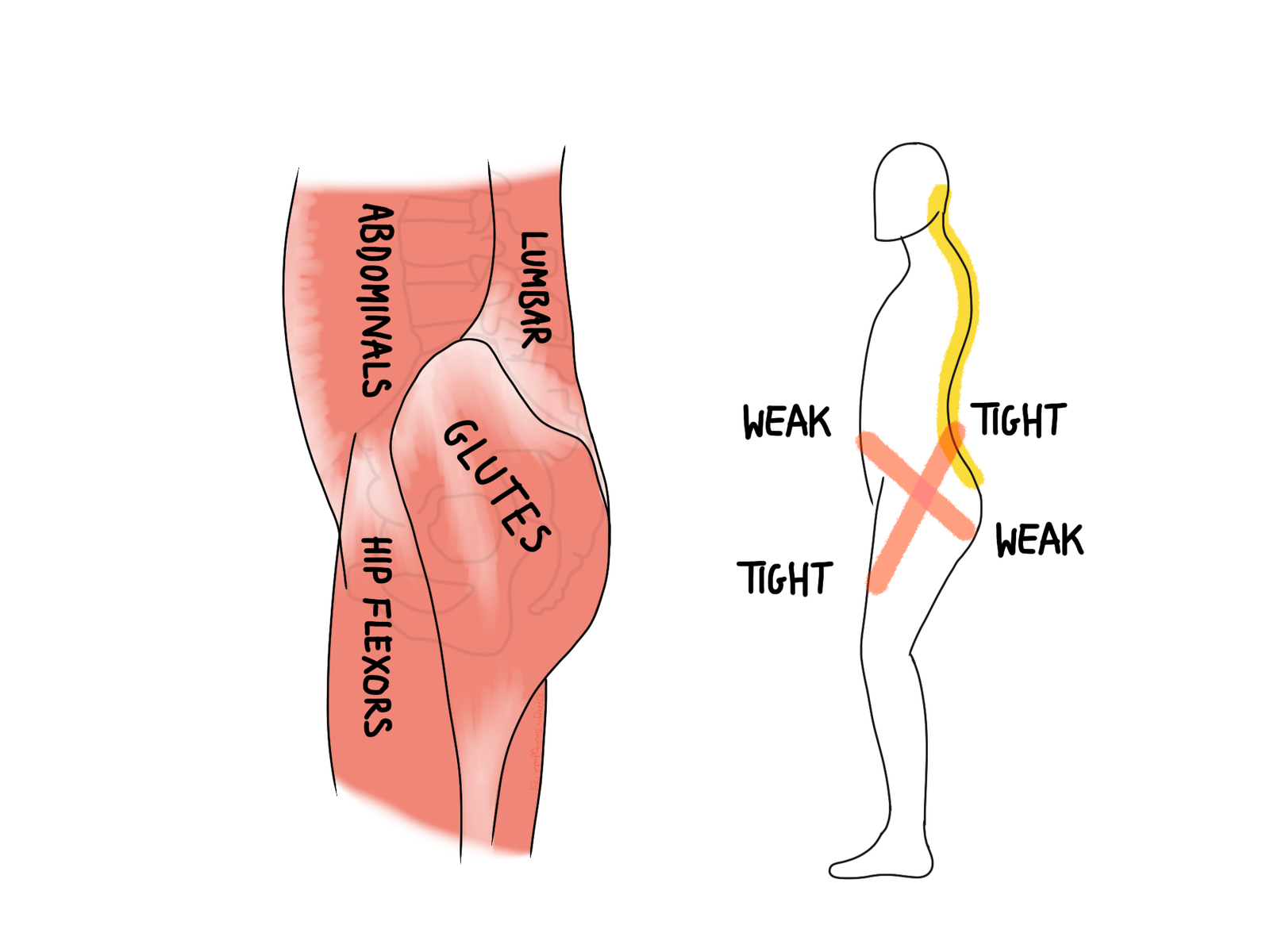The IT band is a band of tissue that runs down the side of the…
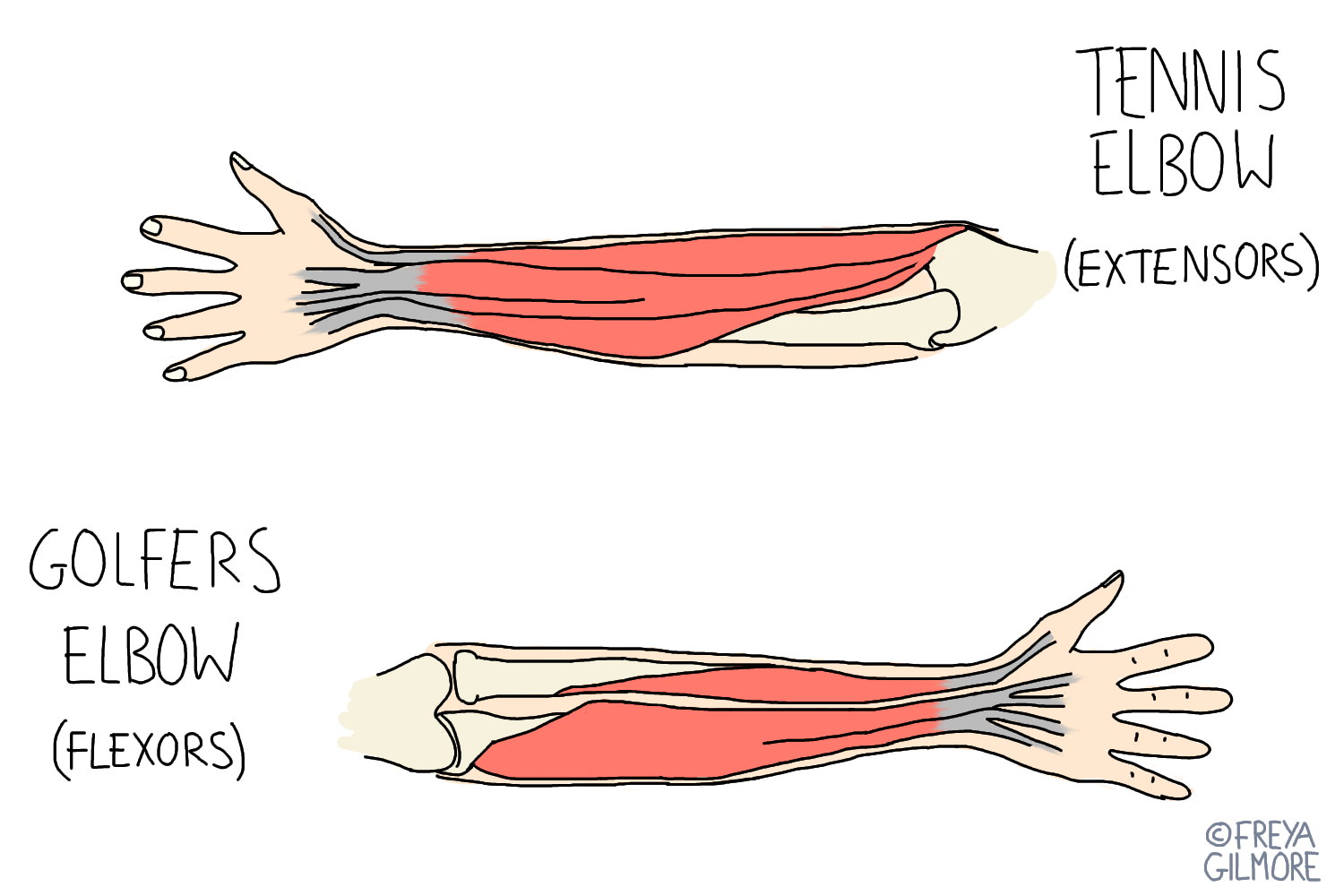
Tennis Elbow
We’ve all heard of tennis elbow, but do you know what it really is? Or that you can develop it without ever playing tennis?
The technical name for tennis and golfer’s elbow is epicondylitis. The epicondyles are the edge of the humerus (upper arm bone), where muscles attach. If these muscles become tight and irritated over a long time, the point where they attach to the bone can get inflamed. So it’s not just a typical pulled muscle.
Symptoms
Once we cross the line from muscle strain to epicondylitis, symptoms change too. Pain may be more persistent, not just while using the affected muscles. It might also be a deeper ache than before. Signs of inflammation around the elbow include heat, redness, swelling, and tenderness. Activities may be limited by weakness in those muscles.
Tennis Elbow
This is the one we’ve all heard of. The muscles involved here are the wrist extensors. That refers to the muscles that bend your wrist back. You can feel them working if you touch just below the outside of your elbow and move your wrist.
You can imagine that a strain from playing backhand shots in a racket sport could lead to tightening through these muscles, but it doesn’t have to be sport. The same strain can come from walking home with heavy shopping bags. Even holding a heavy pan, especially one with a thin handle, could be a factor.
Golfers Elbow
The lesser known epicondylitis is golfer’s elbow. It works exactly the same as tennis, but on the opposing muscles: the wrist flexors. These can be felt working on the inside or underside of your forearm, just below the elbow.
Repeated or prolonged wrist flexion (bending your wrist forward) increases chances of developing golfer’s elbow. Again, this doesn’t have to be from golf. Hanging a car seat on one arm and gripping the side handle could stress the wrist flexors.
Managing Tennis Elbow
If this has been a recurrent strain due to sport or another activity, we want to work out a way around it. Maybe there are exercises you could do before and after, or maybe there’s something you could change about the activity itself. We can help with that.
There is evidence to support the use of acupuncture for tennis elbow. As with all treatments, this is only an option if you are comfortable with it. Other approaches include working through the muscles with massage, and helping the joints nearby. Sometimes stiffness in the wrist or shoulder increase the load on the elbow, so we like to look further afield.
Exercises at home are useful for speeding up recovery. Your osteopath might advise heat or ice to the affected area, or self massage and movement. Most importantly, if your symptoms are currently mild, your osteopath may be able to nip it in the bud before epicondylitis starts.
Book an appointment online if you suffer from Tennis or Golfer’s Elbow
